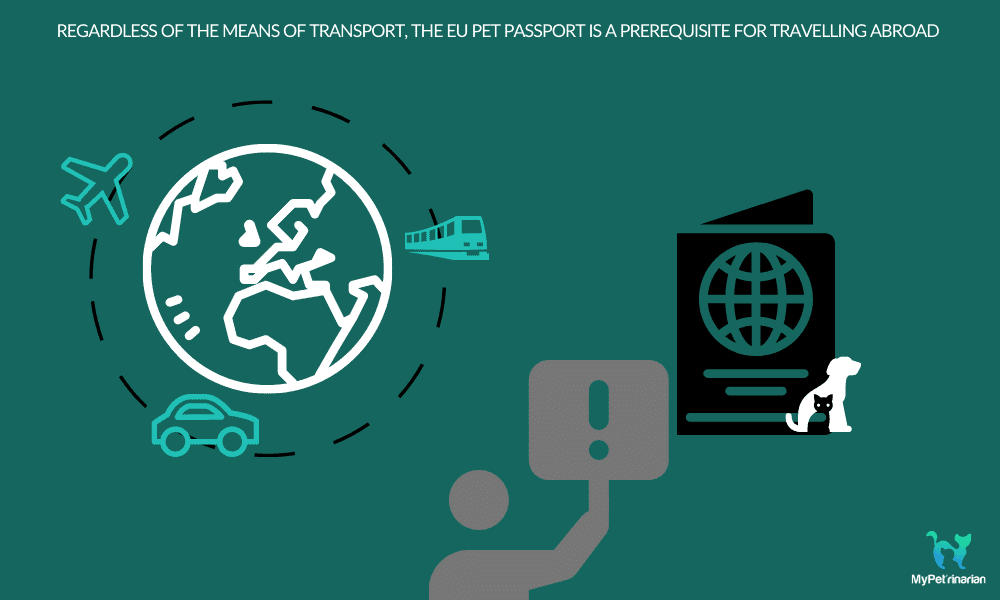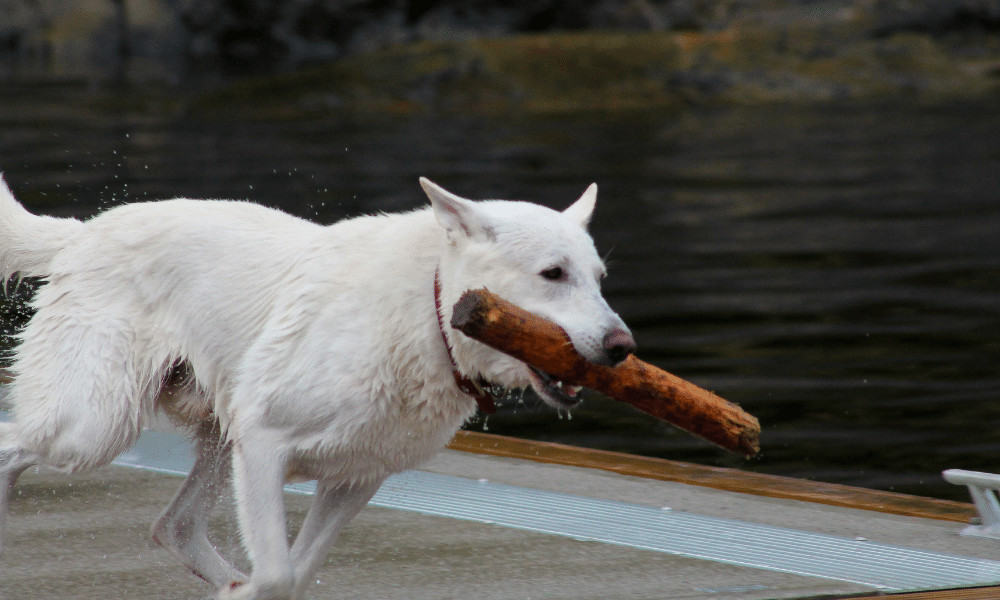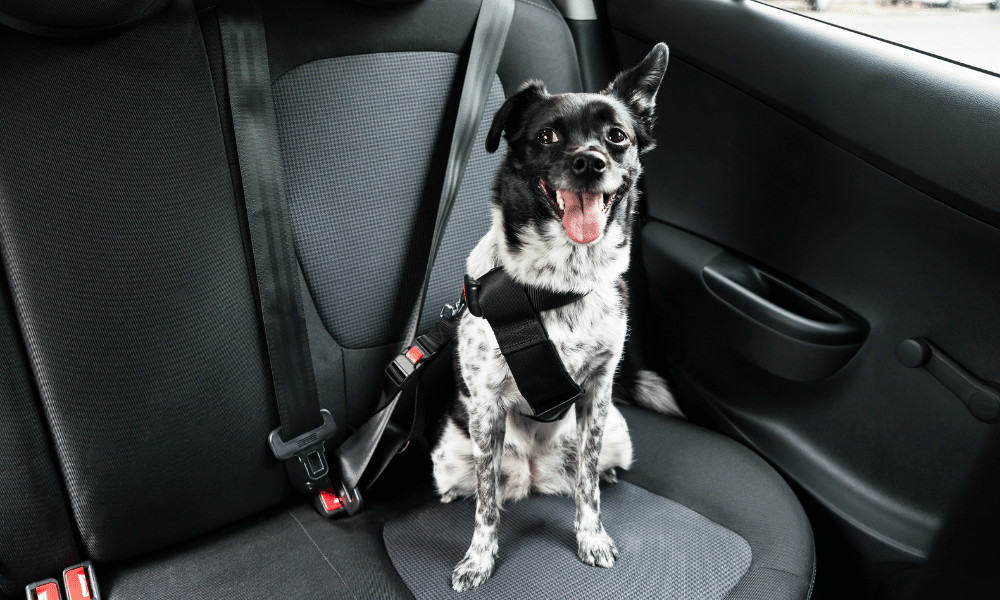Travelling with our pets is something we all dream of doing, but rules and regulations for animal transport can be daunting and difficult to understand, often preventing us from taking our furry family members along on trips.
Travel providers often place several restrictions on pet travel and animal transport in general, including the type of carrier allowed, weight and number of pets, type of pet, etc. Oftentimes carriers have different restrictions, as do origin and destination countries. If only it were simple to understand!

What “Travelling With Pets” Actually Means
According to the Danish Veterinary and Food Administration, travelling with pets is classified as “non-commercial relocation.” This means that the pet is moved because it travels with the owner and/or the pet may not be sold.
Travelling With Pets Abroad
Travelling abroad with your pet requires advanced planning. You should check regulations for both the origin and destination countries, especially any vaccination, pet passport, deworming and veterinary certificate requirements. MyPeterinarian offers virtual consultations, which are a good way to check in with our veterinarians before any planned travel to ensure your pet is healthy and travel ready. Our veterinarians can also then pay a house call to administer any needed vaccines, like the rabies vaccine, which is a requirement for cats and dogs in the EU.
Within and to or from the EU, your pet must have an EU pet passport. Check out our website for more info on the EU pet passport and how to get one.

Are You Going To Fly?
Airlines have different rules for pet transportation. Some allow pets in the cabin, others only allow carriage in the cargo hold. Some, like RyanAir, do not transport pets at all, except for guide or service dogs.
Pets in Cabin (the most common requirements)
- The weight of your pet together with the bag / carrier must not exceed 8kg.
- The carrier must be specifically used for animal transport (well-ventilated, made of strong, solid material and waterproof) and should be compliant with the airline’s dimension requirements.
Your pet must be able to stand up, turn around and lie comfortably in the carrier.
Although some guidelines are the same, each airline also has its own. Therefore you should avoid possible complications by reading the specific guidelines of the airline you’ll be using before travelling

Pets in the cargo hold (the most common requirements)
- The transport box must be made of strong, solid material.
- The bottom of the transport box must be covered with liquid-absorbent material such as a blanket. Some airlines, for instance, SAS, also allow newspapers as an absorbent material, others do not (e.g. Norwegian).
- If there are wheels on the transport box, they must be removed or locked.
The transport crate must be equipped with two bowls for both water and food or a bowl that is divided into two sections.
The pet must be able to stand up, turn around and lie comfortably in the transport crate.
- The pet must be able to stand up, turn around and lie comfortably in the transport box.

Be Prepared!
Being prepared to travel with pets is not always easy. Especially the first time you do it. Therefore, keep an eye on the aforementioned rules. In addition, there are many other requirements that must be met. Each airline has its own guidelines. Therefore, read them carefully to avoid unnecessary complications.
Even if everything is in place according to the guidelines, you still need to think about your pet. You may need a vacation, but consider the condition of your pet. If your dog or cat cannot stay calm in a bag or cage for a long time, reconsider whether the trip is really a good idea.

Otherwise, there are other options. For example, you can hire someone who wants to take care of your pet. At MyPeterinarian, we also offer a range of services that can make your life a little easier.
In addition, we also offer virtual consultations, where you have the opportunity to discuss with one of our veterinarians, among other things, about how you can tackle holidays with your furry friend or about other solutions if your pet is not ready to travel.
Are You Planing To Drive?
Travelling with pets is not necessarily just a flight. Especially with dogs, we can find many car trip fans. And this can in many cases be a reason why we choose to drive instead of fly.

No Conditions
In Denmark, there are no specific legal requirements for dog transport in cars. it is up to you whether you want your dog to be in a crate, carrier or just roam free.
Be aware, however, that in Denmark, dogs are categorized by the police as goods. And the Traffic Act on the transport of goods states that goods may only be transported if it is not a danger to persons in the car. Goods must not cause any damage. But no matter what the law says, you should always think about safety – safety of the driver, pet and other potential passengers.

Car Trip With Pets Abroad
Although you have lots of freedom in relation to dog transport in Denmark, it is not necessarily the same way in other countries. As with airlines, guidelines for travelling with pets vary across countries. Therefore, we again urge you to check these specific requirements thoroughly.
In Sweden, for example, you must ensure that the pet cannot move freely while driving. This is done by transporting your pet in a crate or fastening it with a dedicated seat belt.
NOTE: If you transport your cat or dog in a crate, it is important to check the dimensions of. If the crate is too small, you risk a fine..

If you go on holiday to Germany, the rules are stricter than they are in Denmark but looser than in Sweden. Here you must have, as a minimum, your pet restrained to avoid free movement in the cabin. If the rule is not complied with, you risk a fine.
Travelling outside of Denmark by car does not mean that your pet does not have to have an EU pet passport. No matter the means of transport, the passport is a necessity and MyPeterinarian can help! help with!
Have a Good Holiday!
If you decide to travel, we hope this little guide will help you do just that. However, if there is something you are missing along the way, do not hesitate to send us a message!


